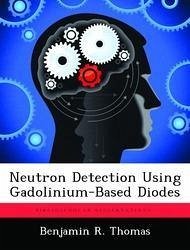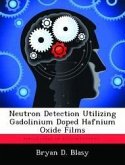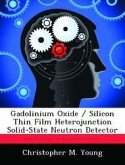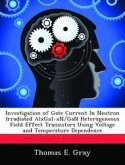P-n heterojunction diodes consisting of a thin n-type layer of Gd2O3 deposited on both p-type Si and p-type 4H SiC substrates were explored as possible solid-state neutron detectors. 79 keV internal conversion electrons from the de-excitation of the meta-stable Gd-158 nucleus can create ionization in the depletion region of the reverse-biased diodes resulting in a detectable signal. The diodes were modeled with Davinci software to determine the feasibility of signal detection above the reverse-bias leakage current. A CASINO simulation showed that less than one percent of the internal conversion electrons deposit their full energy within the achievable depletion region. After depositing contacts on samples prepared at the University of Nebraska, Lincoln, the diodes were exposed to thermal neutron fluxes of approximately 10³ n/cm² s in the AFIT Standard Graphite Pile and 10¿ n/cm² s in the thermal column of the Ohio State University Research Reactor. Pulse height spectra collected during irradiations at various reverse bias voltages ranging from - 0.5 V to -5.0 V revealed no discernable neutron induced features. Oscilloscope traces captured during the high thermal neutron flux irradiations show pulses; however, no evidence exists to attribute these pulses to neutron interactions.
Hinweis: Dieser Artikel kann nur an eine deutsche Lieferadresse ausgeliefert werden.
Hinweis: Dieser Artikel kann nur an eine deutsche Lieferadresse ausgeliefert werden.








